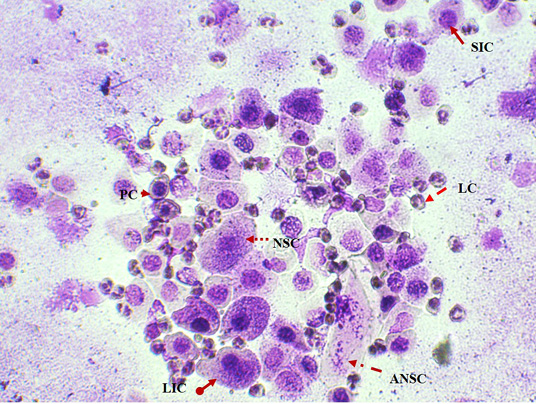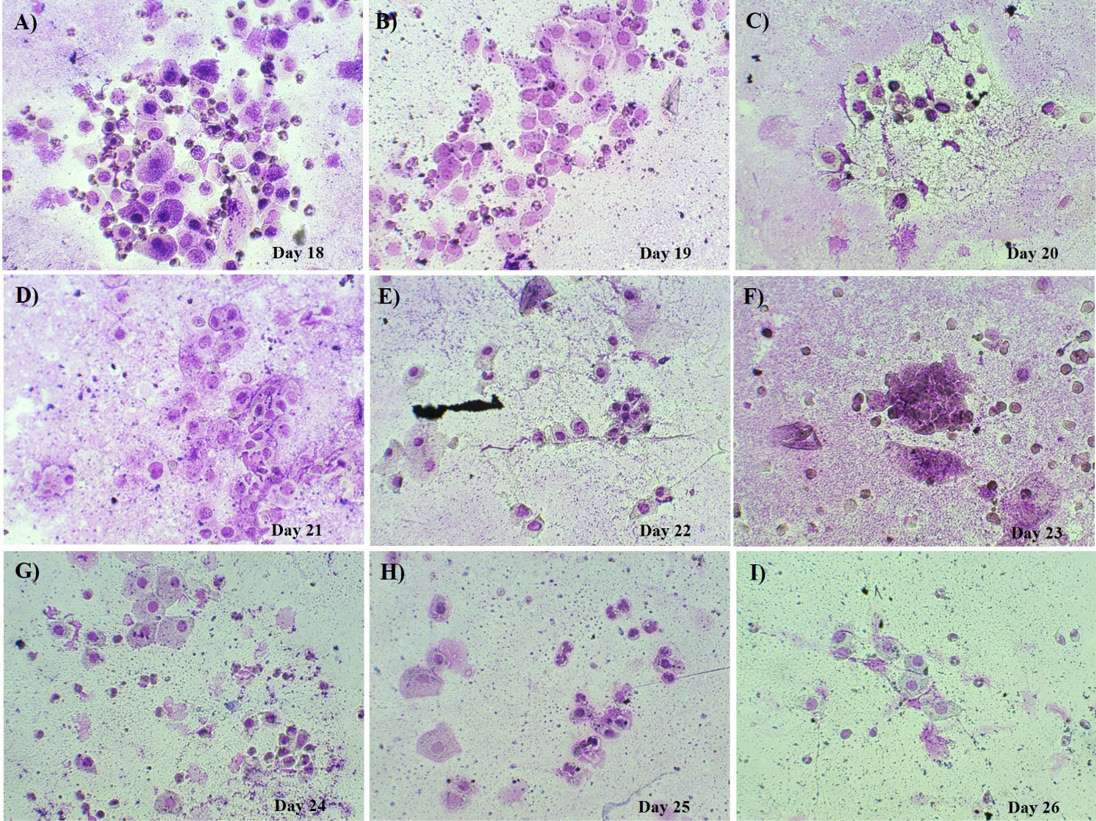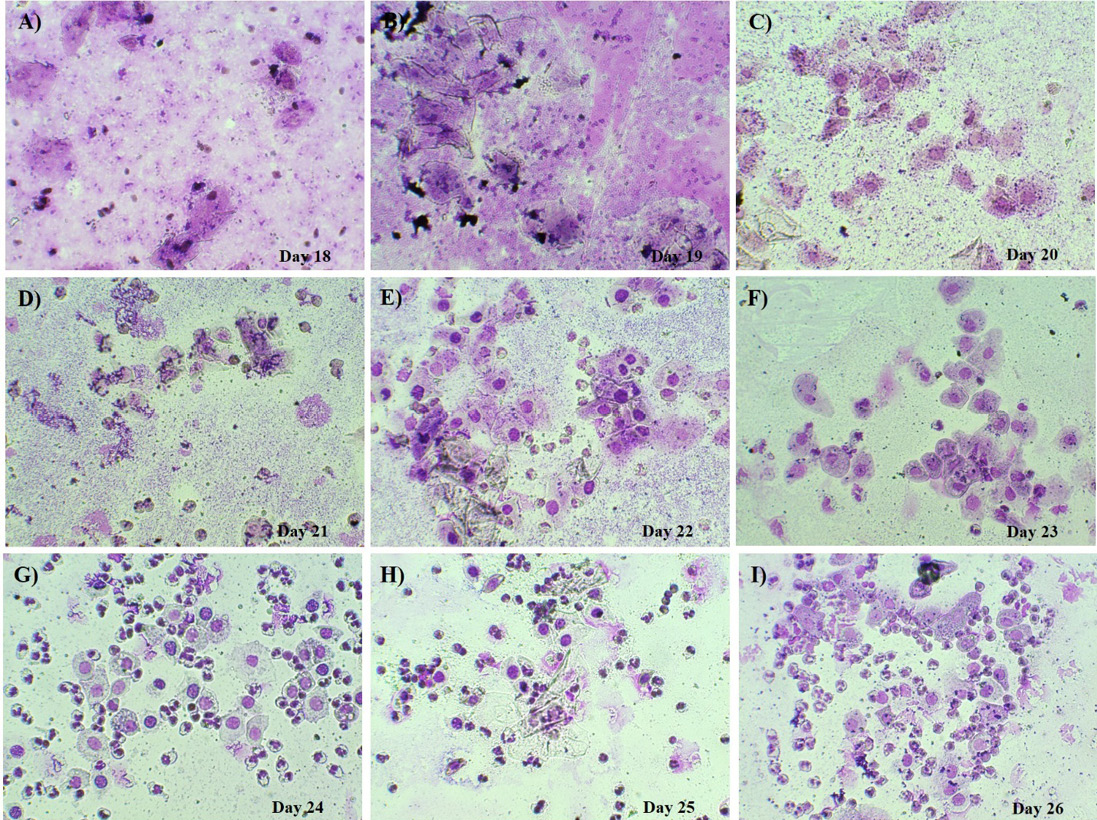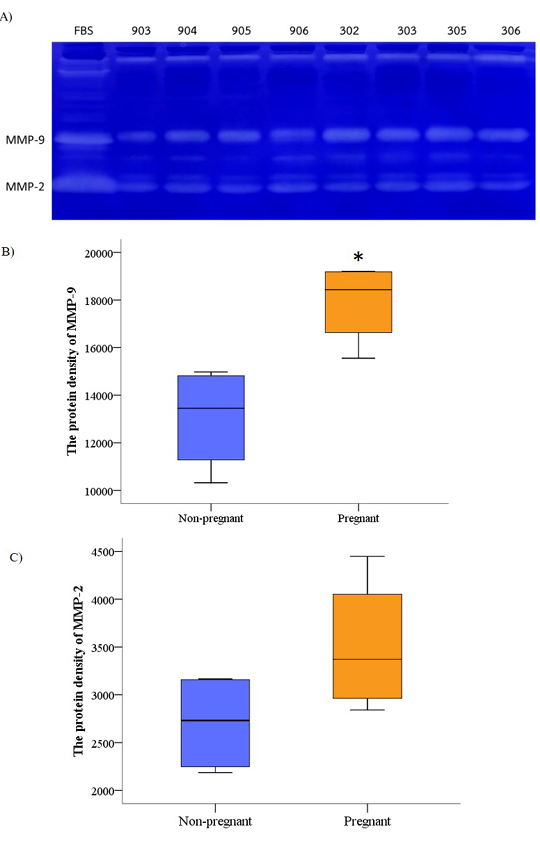Utilizing Vaginal Cytology and Gelatin Zymography for Pregnancy Diagnosis in Pigs
Utilizing Vaginal Cytology and Gelatin Zymography for Pregnancy Diagnosis in Pigs
Adsadawut Sanannam1, Worawatt Hanthongkul2, Yu-Jing Liao3, Kunlayaphat Wuthijaree4, Pattaraporn Tatsapong4, Amornrat Wanangkarn4,5, Anurak Khieokhajonkhet4,5, Niran Aeksiri4,5, Sureeporn Saengwong6, Wilasinee Inyawilert4,5*
The vaginal cytology of female pigs exhibits various types of epithelial cells, including parabasal cells (PC), small intermediate cells (SIC), large intermediate cells (LIC), nucleated superficial cells (NSC), anucleated superficial cells (ANSC), and leukocytes (LC).
Representative vaginal smear images from pregnant pigs during days 18 to 26 after insemination, showing a higher number of leukocytes and a limited number of nucleated and cornified epithelial cells.
Representative vaginal smear images from non-pregnant pigs during the return estrus stage and subsequent days, illustrating the prevalence of different cell types at various time points.
Gelatin zymography to determine the difference between non-pregnant and pregnant pigs at 60 days post artificial insemination. A) Gelatin zymography gel B) MMP-9 protein concentration C) MMP-2 protein level. Pigs 903, 904, 905, and 906 are not pregnant. Pigs with identification numbers 302, 303, 305, and 306 are pregnant.









